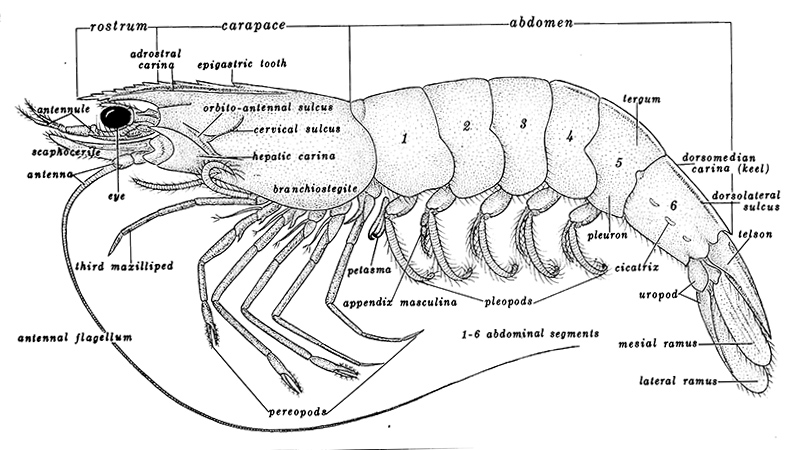
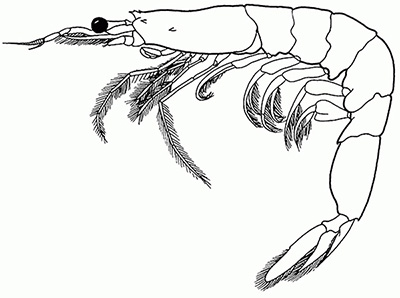
Generalized penaeoid shrimp (from Pérez Farfante, I. 1988, Illustrated key to penaeoid shrimps of commerce in the Americas. NOAA Technical Reports NMFS 64: 1-32.)
Decapod Shrimps: Many long-tailed crustaceans have the common name of "shrimps" (e.g., mantis shrimps, ghost shrimps), but the group of crustaceans that are commonly termed shrimps (or prawns) belong the crustacean order Decapoda. One group (suborder Dendrobranchiata) are those shrimps in which females spawn fertilized eggs directly into the water for planktonic development, with hatching as a primitive naupliuis larva. One superfamily, the Penaeoidea, are mainly bottom dwellers in subtropical and tropical soft-bottom habitats while the other superfamily, the Sergestoidea, are pelagic species. The bulk of shrimp fishery and shrimp aquaculture production is composed of penaeid and sergestid species.
The other major shrimp groups belong to the other decapod suborder, the Pleocyemata. Unlike the dendrobranchiates, pleocyemate crustacean females attach the fertilized eggs below the abdomen, where they incubate (clean and aerate) the embryos until they hatched as advance larvae or juveniles. In the pleocyemate shrimps infraorders Caridea and Stenopodidea, embryos hatch out as a more advanced planktonic larva, the zoea.
Although the penaeoids and sergestoids are so important in fisheries and aquaculture, the carideans are much more biologically diverse. The Dendrobranchiata (penaeoids and sergestoids) is composed of about 530 described species while the Caridea has nearly 3800 species. The former group occurs mainly in subtropical and tropical marine waters, while carideans can be found in all marine habitats from the tropics to the poles, and there are many freshwater species as well. The Stenopodidea is strictly marine with low species diversity (~ 100 species); one family (the Stenopodidae) inhabits shallow-water rocky and coral reefs in tropical waters, while the other major family, the Spongicolidae, is primarily a deep-sea group, many symbiotic, living as male-female pairs within hexactinnelid ("glass") sponges.
What kind of shrimp is it?
 |
 |
Generalized penaeoid shrimp (from Pérez Farfante, I. 1988, Illustrated key to penaeoid shrimps of commerce in the Americas. NOAA Technical Reports NMFS 64: 1-32.) |
Acetes japonicus (Sergestoidea, Sergestidae) (from FAO (Food and Agriculture Organization United Nations) Species Profiles |
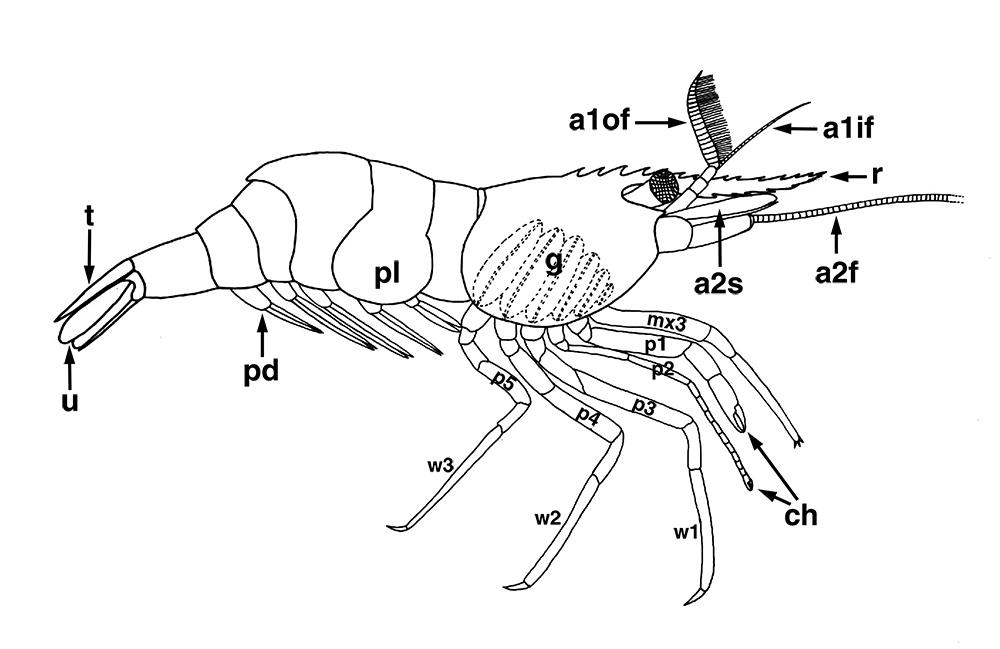 |
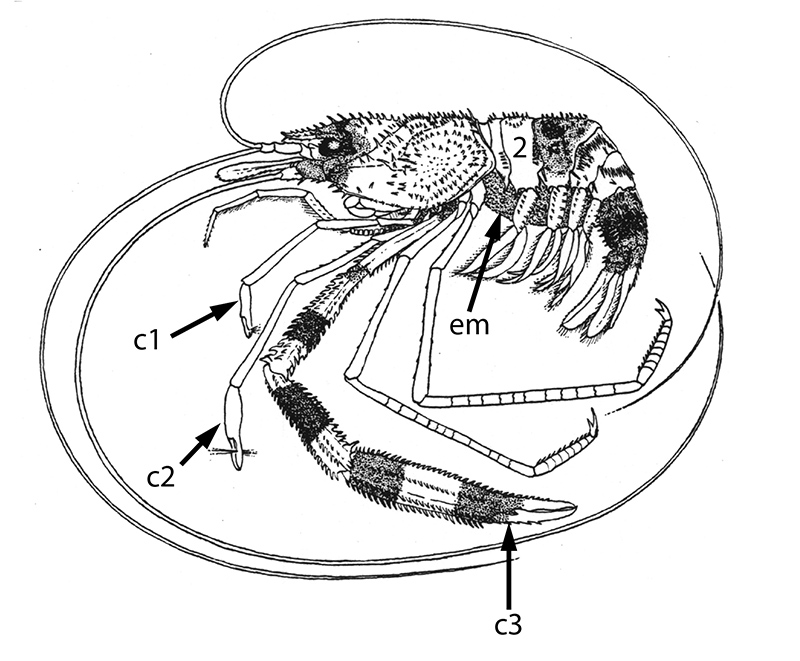 |
Generalized Caridean Shrimp (from Bauer, 2004) |
Stenopus hispidus (Stenopodidea, Stenopodidae) (from Bauer, 2004 after Limbaugh, C., H. Pederson, and F.A. Chace, Jr. 1961. Shrimps that clean fishes. Bulletin Marine Science Gulf Caribbean 11: 237-257.) |
There are many taxonomic keys for identifying shrimps created by specialists in the scientific literature. The first step in identification is simply to determine which major group the shrimp specimen in hand belongs to. A few tips:
1. If the specimen is carrying eggs (embryos) below its abdomen, it must be a female caridean or stenopodidean, as penaeoids and sergestoids do not incubate embryos.
2. If the specimen has most of its legs, check for the number of pairs of chelipds, i..e., legs that terminate in chelae (pincers or claws). Penaeoids have three pairs of rather small chelae, as do most sergestoids, although those of the latter are almost microscopic. Carideans usually have two (but never three) pairs of chelae, while stenopodideans have three pairs but, unlike the penaeoids and sergestoids, the third is quite large, a massive weapon.
3. Another good indicator is the relative placement of the abdomen's (tail) side plates, termed pleura. In the dendrobranch shrimps, the first pleuron slightly overlaps the second, the second overlaps the third, etc. In carideans, the second side pleuron overlaps the first and third. In many carideans, has a saddle shape. In stenopodideans, the first pleuron is reduced is size; the other pleura have little or no overlap.
4. The gill structure is a good indicator of the major taxon to which a shrimp belongs to if the other characters above are missing or ambiguous. Decapod gills always have a central rib (rachis) to which numerous filaments are attached. Dendrobranchiate shrimps are so named because the gills of most families have a dendritic nature (dendrobranchs). The paired side filaments are usually dichotomously branched (see figures below). Caridean gills are leaf-like (phyllobranchs), with plate-like (lamellar) filaments of the rachis. Trichobranch gills of stenopodideans have multiple filaments projecting all around the central rachis.
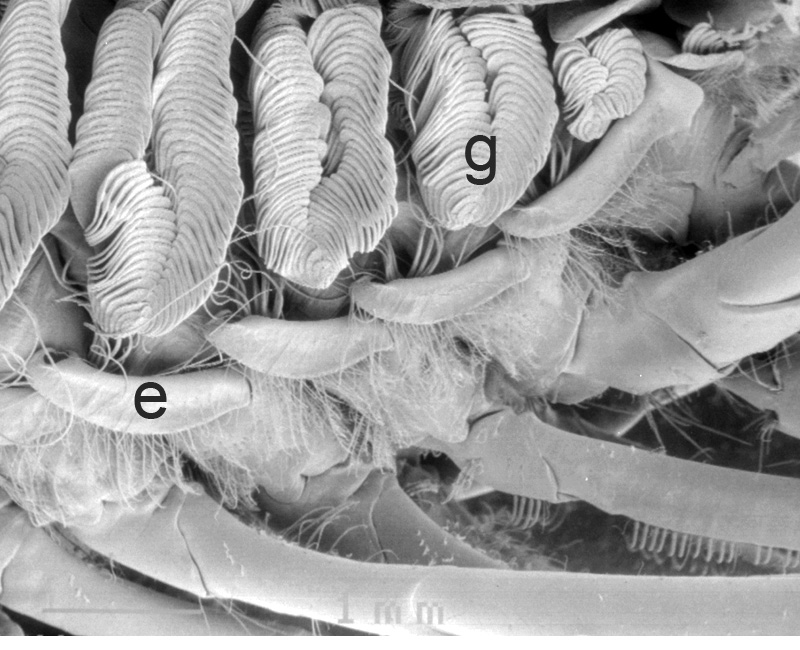 |
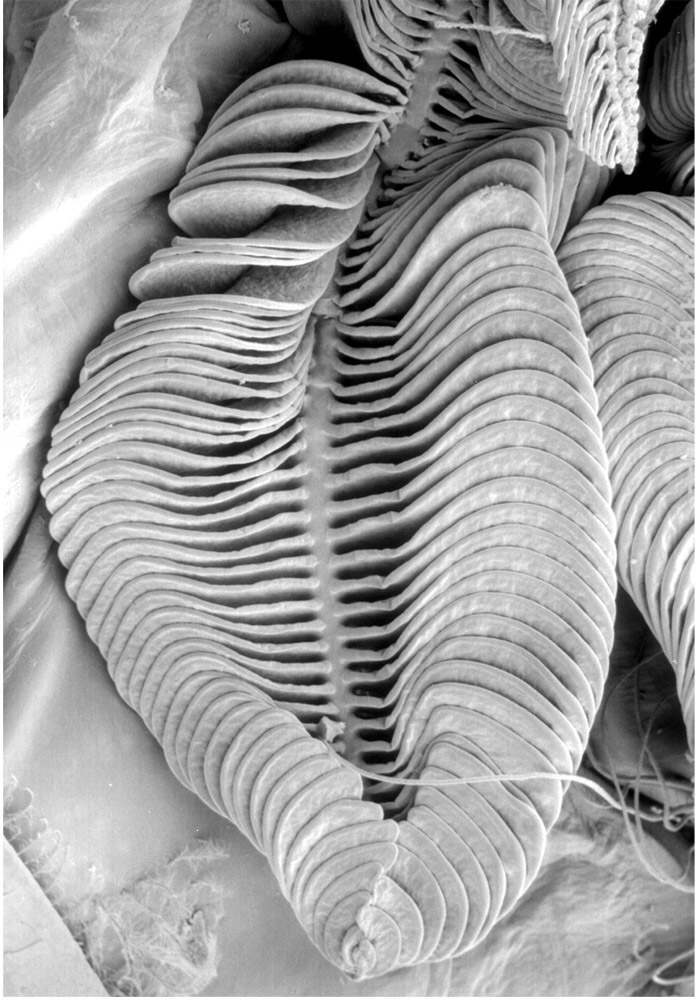 |
Pleurobranch gills in branchial chamber of the caridean Lysmata wurdemanni (g, gill; e, hooked epipod; from Bauer, 2004) |
Close-up of caridean phyllobranch gill |
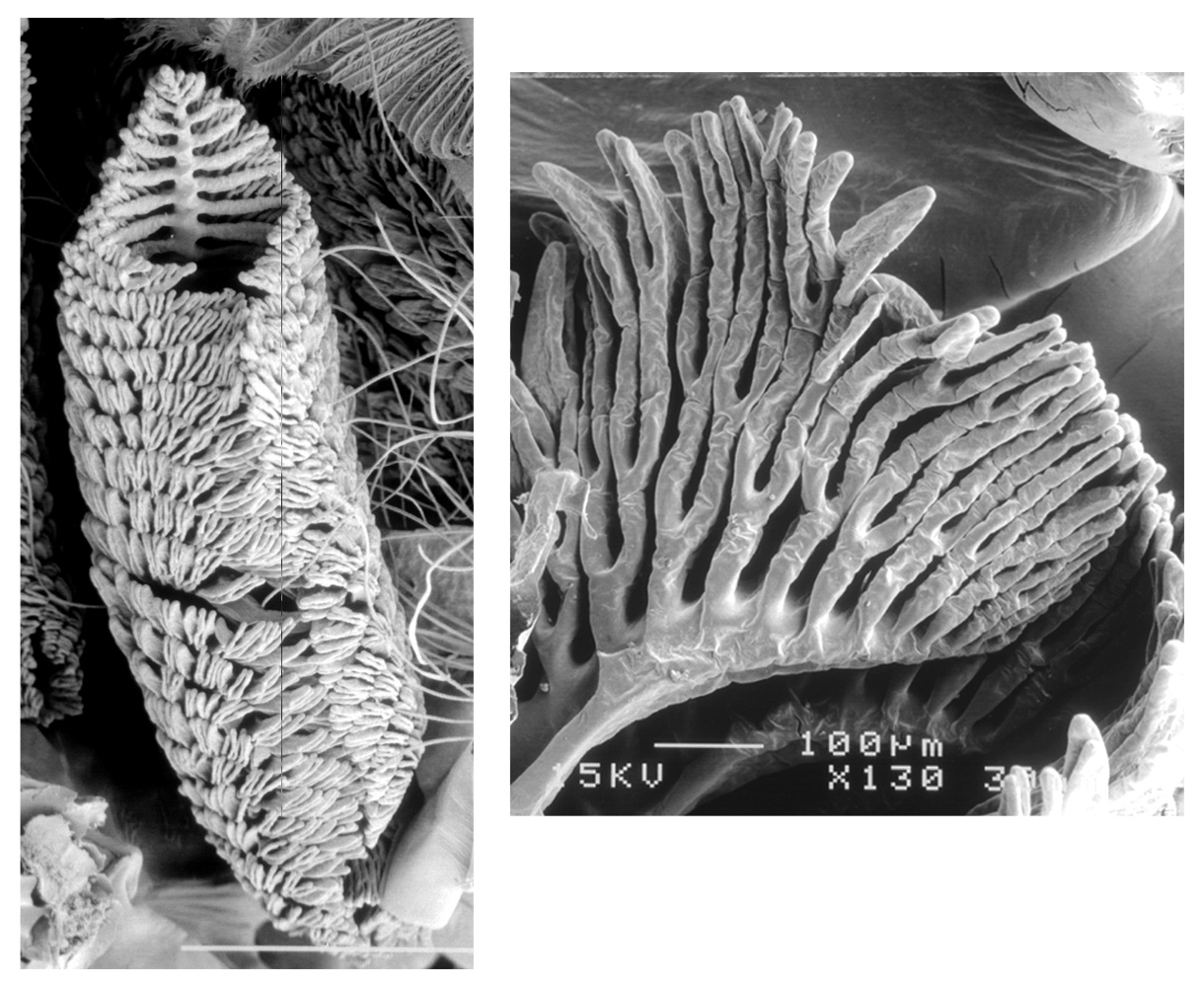 |
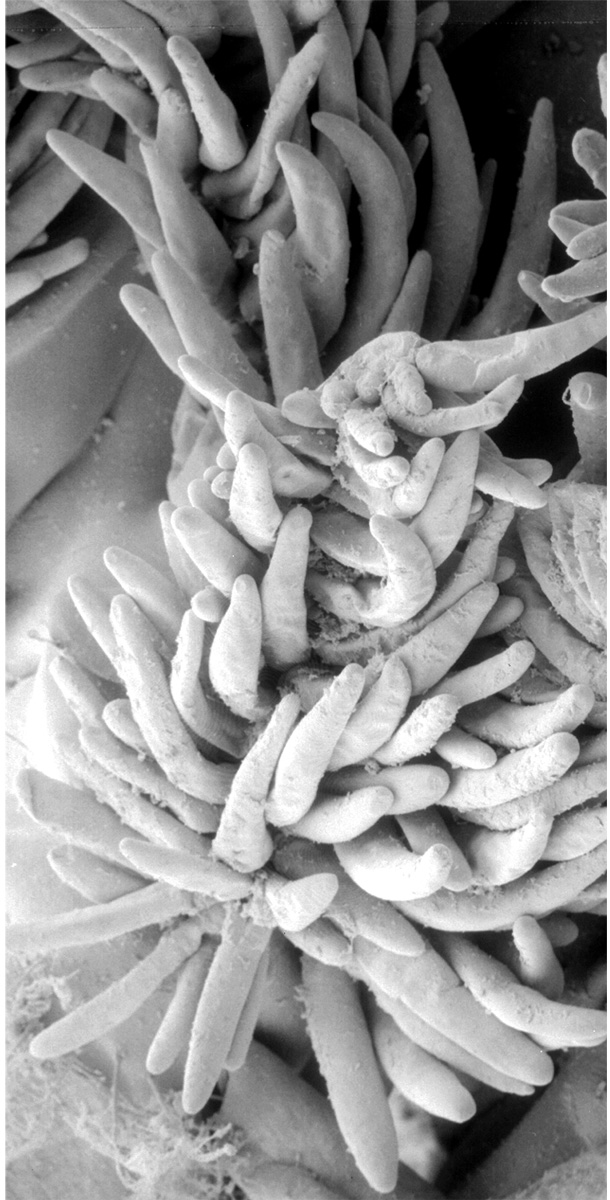 |
Left: Dendrobranch gill of penaeid Rimapenaeus similis; right: closeup of dichotomously branched gill filament (from Bauer, 2004) |
Two trichobranch gills of stenopodidean shrimp Stenopus hispidus (from Bauer, 2004) |
My research has dealt with a variety of aspects of the
biology of these groups, including sexual behavior and mechanics
of insemination, mating strategies, hermaphroditism,
antifouling
mechanisms (especially grooming),
latitudinal
variation in breeding patterns,
ecology of
seagrass species, and camouflage coloration.
These studies have shown me how little we know about these beautiful and
interesting animals.
Back to Home Page.